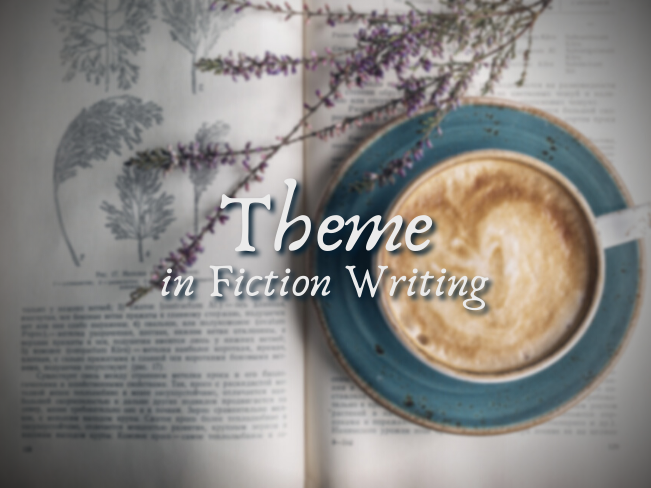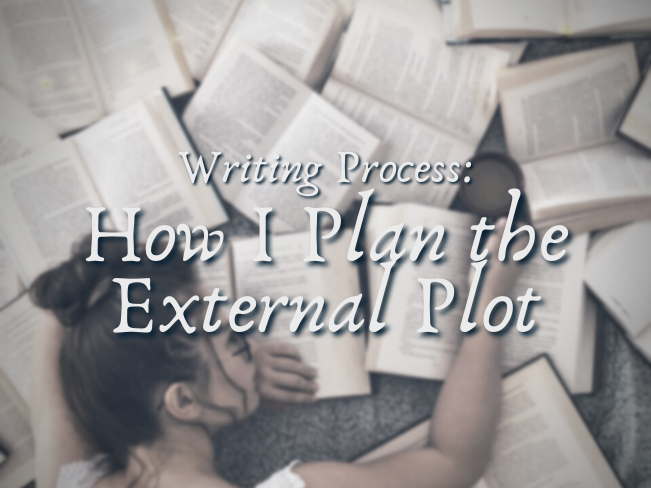
What Would Your Character Do? Redux
In ‘WWYCD Part One’, I shared a tool for getting unstuck when character motivation and behavior has us struggling to main consistency in our work. This tool was a series of notecards (or drawings, or post-it notes, etc.) listing each character’s verb: a word or two that describes the character’s most essential nature through action.
Our characters may be protectors, seekers, caretakers, yearners – the list goes on. Knowing this default state of being is hugely helpful whenever we find ourselves stuck with inconsistent action/reaction cycles or cardboard side characters. It gives us a yardstick by which we can measure character growth (or consistency) and a framework for conflict generation and resolution.
Yet characters are complex animals tucked into a complex narrative framework (ie: a novel). Their single, overarching verb might not be quite enough to go by when we write on a smaller, more detail-oriented scale.
Working at the scene level
Every character in every scene has a goal.
Or at least, they’re supposed to – this is something I struggle with a lot as a writer. I’ve heard scene-sequences described as “try-fail cycles” before, in which your characters work towards a particular goal, try something new, fail, regroup, and try something else in a continuous spiral. Successes come with unintended consequences. Failures come with unexpected knowledge.
These try-fail cycles can vary in length. Some might take up several scenes – even several chapters. Others might be only a fraction of a scene in length. Each time, the character expresses agency by coming up with a plan, trying something new, and pushing past a roadblock to figure out what comes next.
I tend to struggle when my try-fail cycles stretch to include multiple scenes. That’s when the extras creep in: worldbuilding snippets I need in order for the story to make sense. Character interactions that are vital to the growth of a relationship arc. Books might be a series of try-fail cycles stitched together, but what happens within those cycles is what makes the story, and the story isn’t all external plot.
But hooboy, that balance isn’t easy to juggle.
Have you ever hit a scene that felt truly out of place within a story, or a character interaction that made no sense whatsoever given what had just happened a chapter earlier? I have. I’ve written those problems into my stories before. Why did I fall prey to them?
Because I didn’t track the relationship between my character’s verb and their current location within a try-fail cycle.
Lemme unpack that.
Verbs and try-fail cycles
Let’s break the try-fail cycle down into its four major components.
(A/N: this is how I break the cycle down in my head – I make no claims that you have to do it this way, too!)
1. Planning
2. Execution
3. Conflict
4. Consequence
1. (Planning)
In other words:
1. We’re going on a quest to find the Thing – here’s how we’re gonna do it!
2. Wooo, we’re on a quest to find the Thing – omg, we found the thing!
3. Oh no, a dragon!
4. The DRAGON STOLE THE THING—
1. (What do we do now?)
Now let’s imagine a character – say a knight. A gruff, middle-aged knight who has spent her whole career protecting the kingdom and her loved ones. She’s the tank in a merry band of heroes – friends who she loves in spite of their tomfoolery, and though she’s reluctant to join the quest, she recognizes the necessity of obtaining the Thing for king and country.
Her Verb – big verb – is probably protecting.
How does that break down into each of the stages of the try-fail cycle?
Protecting during the planning phase might make her come off overprotective, overly cautious, or restrictive while the merry band talks through their options. Perhaps she’s snappish, even chafing at the bit because talk isn’t her strong suit.
We could even pick a secondary verb to help us interpret protecting as it relates to the scenes around the planning phase. Controlling, perhaps – for trying to control risk, which she might express by attempting to control the behavior and choices of others, or the nature of the plan they concoct.
During the execution phase, the knight will be at her best. She’ll be watchful and vigilant, looking out for threats. And though the duty of care towards the merry band may rest heavily on her shoulders, here, she’s in her element. When danger is low and things are going well, we might even see her crack a joke or take a member of the merry band under her wing. She’s protecting still, but she could be teaching or connecting, too – elements that deepen but don’t contradict her essential nature, and feel authentic given the situation.
The conflict phase brings out even more of the knight’s essential nature. Here, there’s no dissonance between the external plot and her internal wiring: the dragon is a threat, and she must protect against it. Yet we can still use her nature to force her to make a terrible choice—
Which leads to the consequence. Perhaps, at some point, the knight must choose between 1) saving the life of a member of the merry band and letting the dragon run off with the Thing, or 2) saving the kingdom by winning the Thing and dooming her friend. Protect the kingdom, or protect her friend? Whichever she chooses, there will be consequences – and the best consequences in try-fail cycles come from choices our character makes. Especially when these choices are authentic ones that are consistent with their nature.
(IMO, these consequences are all the sweeter when that character made the best possible choice they could, given the knowledge they had – and paid terribly for it anyway.)
Now we’re back to square one: planning phase again. Except this time, the way our knight expresses her verb, protecting, will be colored by the experiences of the last try-fail cycle.
Each part of the try-fail cycle – and each successive cycle – will challenge her verb differently. When is she at her best? When is she at her most constrained? Those are the questions we want to ask of our characters, and their verb should help us find the answer.
Differences in expression and change over time
The best part about these verbs – and possibly the trickiest part about them – is how mutable they are. Verbs aren’t static. Their expression changes based on the plot, environment, and growth arc of the character.
It makes them more difficult to think about from the outset, but more useful in the long run. They’re active descriptions that help us weave characterization into the fabric of our story.
A knight who is protecting is going to show that attribute in a variety of different ways throughout the story, exposing all the different facets of her personality. Yet so long as we stay true to a logical expression of her verb given external stimuli, her characterization should make sense to the reader.
Now, a caveat – the above example certainly isn’t the only way to write a character with a protecting verb in that particular try-fail cycle. Depending on how they express that verb, the sequence and their participation in it could go differently. Most importantly, characters will change how they express their verbs from the beginning of the novel to the end of it – so the way they reacted in Act I should be different from how they react during the climax.
Perhaps at the start of the journey, the knight’s protecting reads as overprotective. She must be in control, she cracks no jokes, she stifles those under her command with the need to keep them safe.
By the end, she might express protecting in a healthier way – by teaching her merry band the skills they need to be safe and trusting their competence to learn how.
Verbs and scene-level conflict
These shifts in verb expression also help us maximize conflict throughout our stories.
For example:
If one of your characters is seeking, find a character who is defending or hiding in that try-fail cycle to stonewall them. If your character is protecting but, in that particular scene, overprotecting because of the pace of his arc, put him with a character who is provoking and see if sparks fly. Use your notecards to find the right character matches for these scenes – or, if you’re locked into a particular cast for a given scene, use the cards to work out which of your preexisting choices have the best chance at propelling the conflict forward without breaking character.
Your notecards are there to help you manage complex character interactions, especially in group settings, by tracing the cascading impacts when each character applies their essential verb in a specific way. If we stay within the boundaries of these verbs for our character, their actions will always have a thread of internal logic – even when they’re being utter idiots!
Let’s get physical
But wait! There’s more!
What does your character look like when they’re Doing Their Verb?
Does our knight, when her protecting is stymied by endless rounds of talking and discussion, none of which are going her way, pace around the room? Does she fidget? Does she pinch the bridge of her nose?
When things are going well and she’s in her protective element, how does she carry her body? Relaxed, with head high?
When things are going poorly and she stresses over keeping her party from harm, does she hold herself tight? Does she compulsively check and re-check the straps on her equipment?
When she’s actively protecting her party, does she put herself bodily between them and harm? Does she throw herself into the fray, guns blazing?
On your notecard, draw yourself a square with a cross in the center (ie: four boxes. Or four columns – I’m not picky.)
Now think about what your character looks like when:
- They’re in their element (ie: the situation allows them to positively express their verb) and in the middle of the action;
- They’re in their element, but there’s a lull in the action;
- They’re out of their element and in the middle of the action;
- They’re out of their element during a lull.
Let’s take our knight as an example again:
| Positive/Active +Fights like a beast +Confident, guns blazing, command voices | Positive/Passive +Head held high +Smiles +Sings old war songs |
| Negative/Active -Physically on edge -Weapon in hand -Puts herself in harm’s way to protect others | Negative/Passive -Serious and with- drawn -Snaps at jokes -Paces |
Now, not only do I have a blueprint for what my knight is like in action/reaction cycles, I also have a blueprint for what she looks like and what she habitually does in most situations. By the end of the book, even the reader should be able to pick up on her mindset when she starts pacing.
Knowing our character’s physical tics – and breaking them down by verb expression – helps not just with consistency of their physical habits, but helps us
- Vary that habit so we aren’t having the character pinch the bridge of their nose in every single situation, and
- Red-flag certain habits by linking them to particular mindsets and emotional states for those characters.
All of this helps with deep characterization and gives the reader the impression that our characters are real people.
Your mission, should you choose to accept it
Now go back to a scene that’s giving you trouble and pull out your character cards. Answer the following questions:
- What are their essential verbs?
- Where are they in the try-fail cycle?
- Will that change how their essential verbs are expressed?
- Are there any secondary verbs for your characters in these scenes?
- Which characters are present? Do any of their verbs conflict, given the group dynamic and the external plot for the scene?
- Is there enough conflict in this scene? If not, which characters can you push together in order to generate conflict? What would that look like, given the circumstances and their individual verbs?
- Or – is there too much going on in this scene? Do we need a breather after a big try-fail sequence?
- What state are your characters in? Positive (the situation complements their verb) or negative (they experience discomfort because the situation conflicts with their verb)? Is the scene active (conflict is actively happening) or passive (we’ve reached a break between try-fail cycles or major scenes)?
- What do your characters look like (ie: what physical tics are they expressing)?
I hope looking at verbs helps you pick your way through whatever thorny narrative problem you may have found yourself in! Otherwise, I hope these notecards serve as a guideline while you’re writing to make characterization richer, easier, and more natural for you. I know the tips certainly helped me, and I plan on using these notecards on the corkboard above my desk for all of my future projects.
For those of you who follow me on Patreon, I’ll post the cards for the casts of Wicked Waters and Potionmaster as I start heading into my revision sequences.
Thanks for reading, and I’d love to hear what you think below in the comments.
 Theme in Fiction
Theme in Fiction Planning the External Plot
Planning the External Plot Worldbuilder’s Disease: Infodumps
Worldbuilder’s Disease: Infodumps
Leave a Reply